
The U.S.-Israeli approach to negotiations with Palestinians remains fundamentally misaligned with justice and human dignity. While Israeli hostages are publicly mourned and framed as victims, Palestinian prisoners are treated as threats — statistics to be managed, not lives to be honored.
In this asymmetrical terrain, U.S. mediation reinforces Israeli security narratives, ignoring systemic abuses: rearrests, torture, indefinite detention, and the criminalization of Palestinian grief and solidarity. Incarceration becomes not a tool of justice but of demographic warfare.
Yet even within this environment, Palestinian resistance reframes captivity — not as defeat but as defiance. Through hunger strikes, courtroom refusal, and the ethic of sumoud (resilience), prisoners have transformed their bodies into frameworks of refusal. This is not passive survival — it is political agency. As PFLP’s prisoner Ahmad Sa’adat declares,
“Our imprisonment is not the end of our struggle — we are the conscience of a people who refuse to be erased.”
This counterframework refuses to engage through the language of victimhood alone. It posits prisoners as political subjects — architects of strategy, not merely its symbols. Their bodies become texts of resistance, declaring humanity through suffering wielded deliberately. The ethical foundation of this model begins not with what must be demanded, but what must be refused.
Refusal is not obstinacy — it is strategy. The counterframework rejects hostage diplomacy staged as deterrent theater, denounces militarized humanitarianism where aid becomes surveillance, and repels the symbolic erasure encoded in practices like anonymous burial and re-arrest. These acts strip captives of memory and dignity in an effort to unwrite them from the historical record.
The refusal is deliberate, layered, and unyielding. Hamas and allied factions have responded to Trump’s proposed prisoner exchange and ceasefire deal with a spirit of negotiation — but not submission. They understand the logic underpinning the dominant framework: Israel retains military leverage while discarding the burdens of governance; it aims to dismantle Hamas while presenting itself as a rational actor in a “peace process.”
The asymmetry is clear: the framework is not peace — it’s containment.
In submitting counterproposals, Hamas and allied factions reframed the negotiation. Their demands reject tactical pacification and assert structural conditions for any progress. Chief among these is the full withdrawal of Israeli forces from Gaza. Though the upfront demand for ending the war has been softened, the insistence on written guarantees — specifically for troop retreat and uninterrupted ceasefire negotiations — signals the emergence of a political safeguard.
The notes of the Hamas and allied factions further call for international oversight — preferably under UN administration — and removal of U.S.-Israeli control over aid and surveillance. Hamas and its allies understand the risks of leaving mediation tools in the hands of those invested in their containment. The counterframework demands mediation not as diplomatic theater, but as structural protection.
These positions reorient the entire frame of the negotiation. The factions are no longer reacting to Israeli terms — they’re building a system where justice isn’t deferred to humanitarian appeals but embedded in strategic architecture.
.
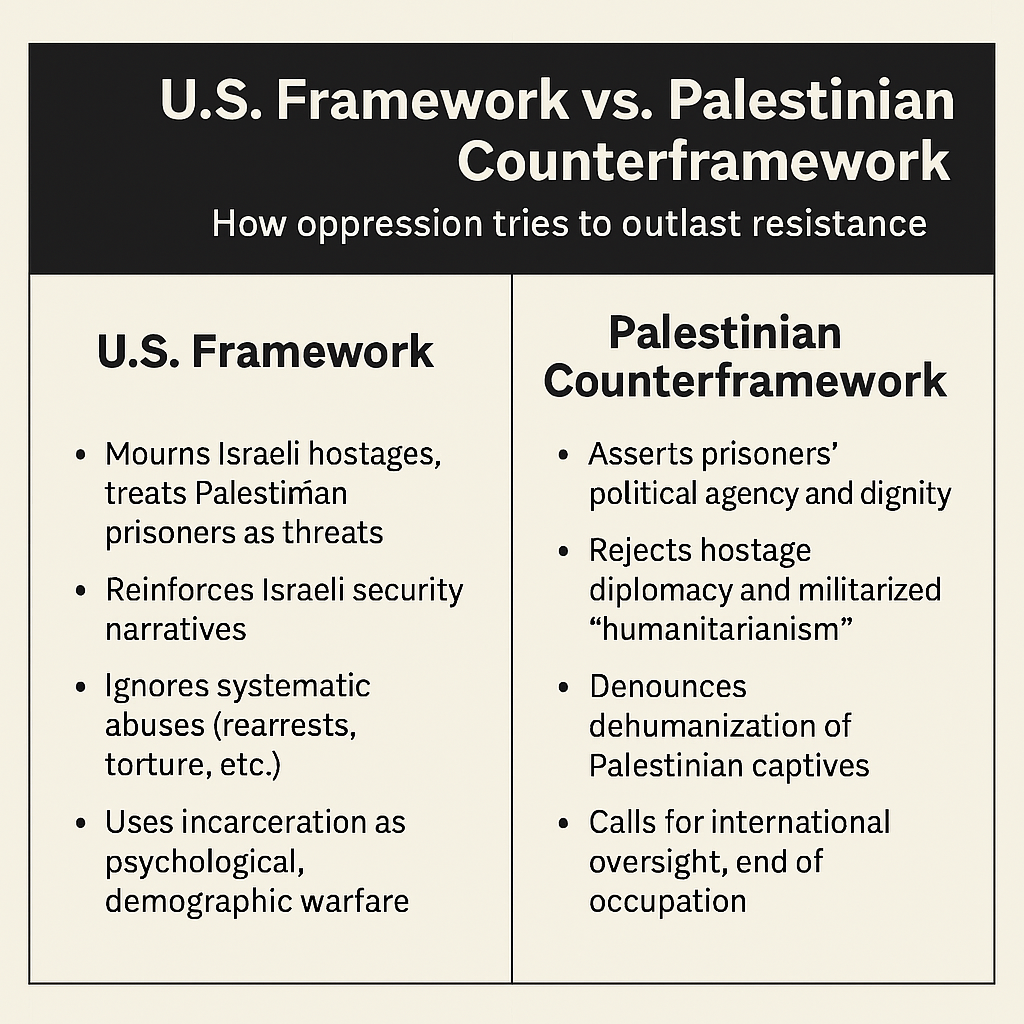
U.S. Framework vs. Palestinian Counterframework: How oppression tries to outlast resistance
.
Palestinian factions, far from being reactive, now hold key cards:
- Operational Leverage: Remaining Israeli captives are not just bargaining chips — they are Israel’s strongest incentive to negotiate. The factions control the timeline and rhythm.
- Political Unity: A unified front among factions strengthens their legitimacy, undercutting narratives of fragmentation and allowing them to act with moral coherence.
- Narrative Authority: By framing the negotiation as one centered on sovereignty, protection, and justice — not mere exchange — they control the moral terrain.
This leverage does not simply stall Israeli ambition — it redefines the negotiation itself.
As one analyst recently put it, “Hamas isn’t playing with borrowed cards — it’s designing its own deck.” And as Fateh’s prisoner Marwan Barghouti stated, “Resistance is a holy right for the Palestinian people to face the Israeli occupation. Nobody should forget that the Palestinian people negotiated for 10 years and accepted difficult and humiliating agreements, and in the end didn’t get anything except authority over the people, and no authority over land, or sovereignty.” Here, he is not just reflecting on past failures, but insisting that dignity and sovereignty must anchor any negotiation and reframing what legitimacy looks like.
If Netanyahu responds true to form, several patterns will likely emerge:
- Delay Tactics: Publicly, negotiations will slow under the guise of security reviews and logistical constraints — buys time, hopes to fracture Palestinian unity.
- Defiance Masked by Concession: Netanyahu may appear hawkish to domestic audiences while quietly engaging mediators to preserve diplomatic cover.
- Displacement of Blame: He’ll lean on U.S. mediation to obscure accountability, portraying Israeli rigidity as consequence of “external constraints.”
But the terrain has shifted. Public sympathy, diplomatic fatigue, and the irreducibility of Palestinian refusal may disrupt his playbook.
If Netanyahu overplays his hand, dragging negotiations without movement, he risks pushing factions from tactical flexibility to strategic closure, i.e., the withdrawal of participation as a strategic response to a framework that undermines justice from the start.
The counterframework insisted upon by Hamas and allied factions isn’t designed to win negotiations — it’s meant to transcend them. Its logic is liberatory, not procedural. Ceasefires must not merely pause violence — they must erode the legitimacy of systems that reproduce it.
This means restoration of collective dignity as the barometer of success — not appeasement metrics, and the insistence on international oversight divorced from occupation logics and recognition of Palestinians as strategic participants in shaping political outcomes.
To the extent that prisoner exchanges and ceasefires are real, they must reflect the architecture built by prisoners themselves — the cost borne, the unity forged, the refusals sustained.
Resistance, in this frame, is not reactive. It is architectural.
*
Click the share button below to email/forward this article. Follow us on Instagram and X and subscribe to our Telegram Channel. Feel free to repost Global Research articles with proper attribution.
Rima Najjar is a Palestinian whose father’s side of the family comes from the forcibly depopulated village of Lifta on the western outskirts of Jerusalem and whose mother’s side of the family is from Ijzim, south of Haifa. She is an activist, researcher, and retired professor of English literature, Al-Quds University, occupied West Bank. Visit the author’s blog.
She is a regular contributor to Global Research.
Featured image: One table, two frameworks; power negotiates. Resistance endures; the future hangs in the balance (Source: Rima Najjar)
Global Research is a reader-funded media. We do not accept any funding from corporations or governments. Help us stay afloat. Click the image below to make a one-time or recurring donation.


.png) 4 day_ago
15
4 day_ago
15










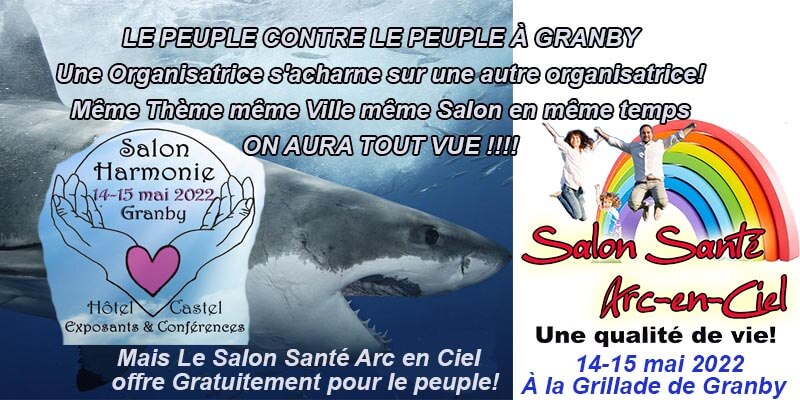
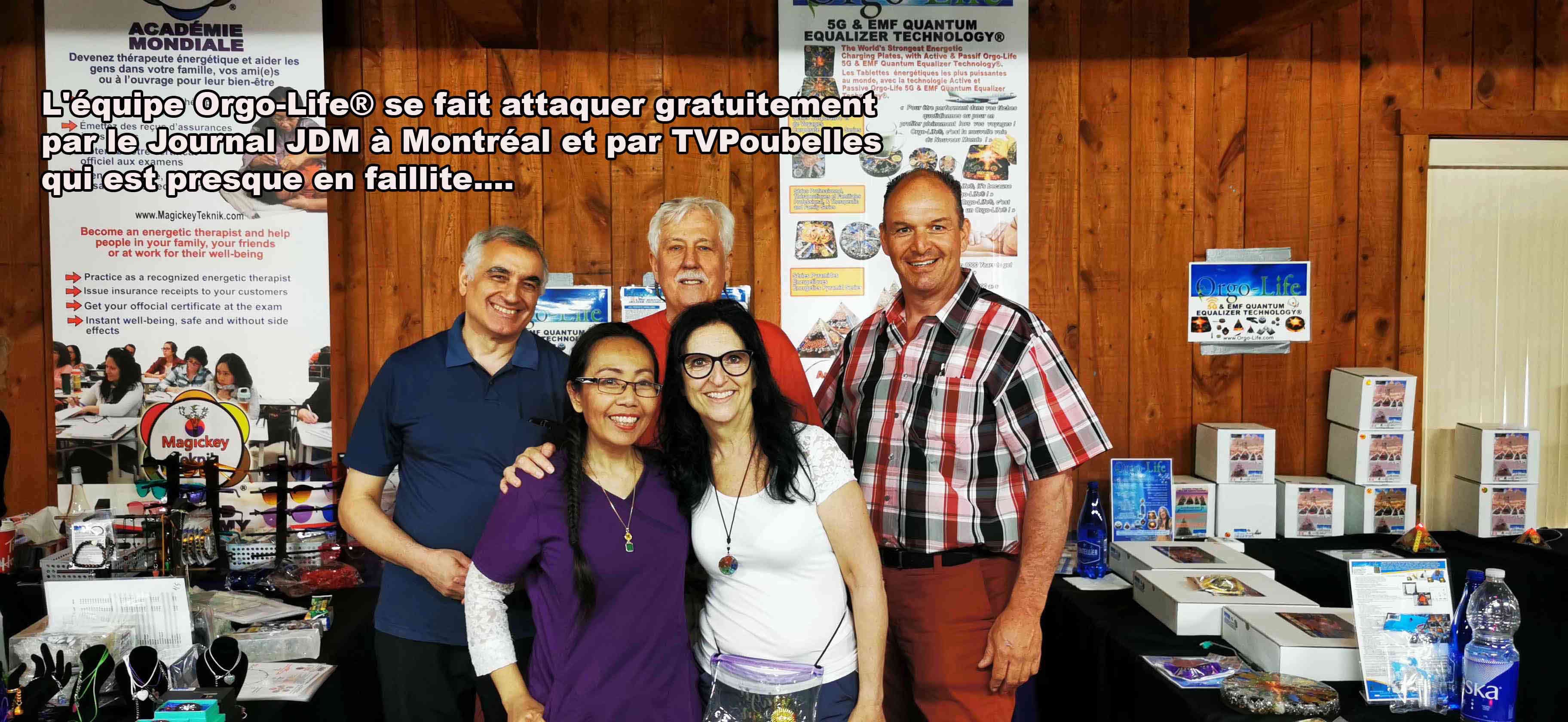


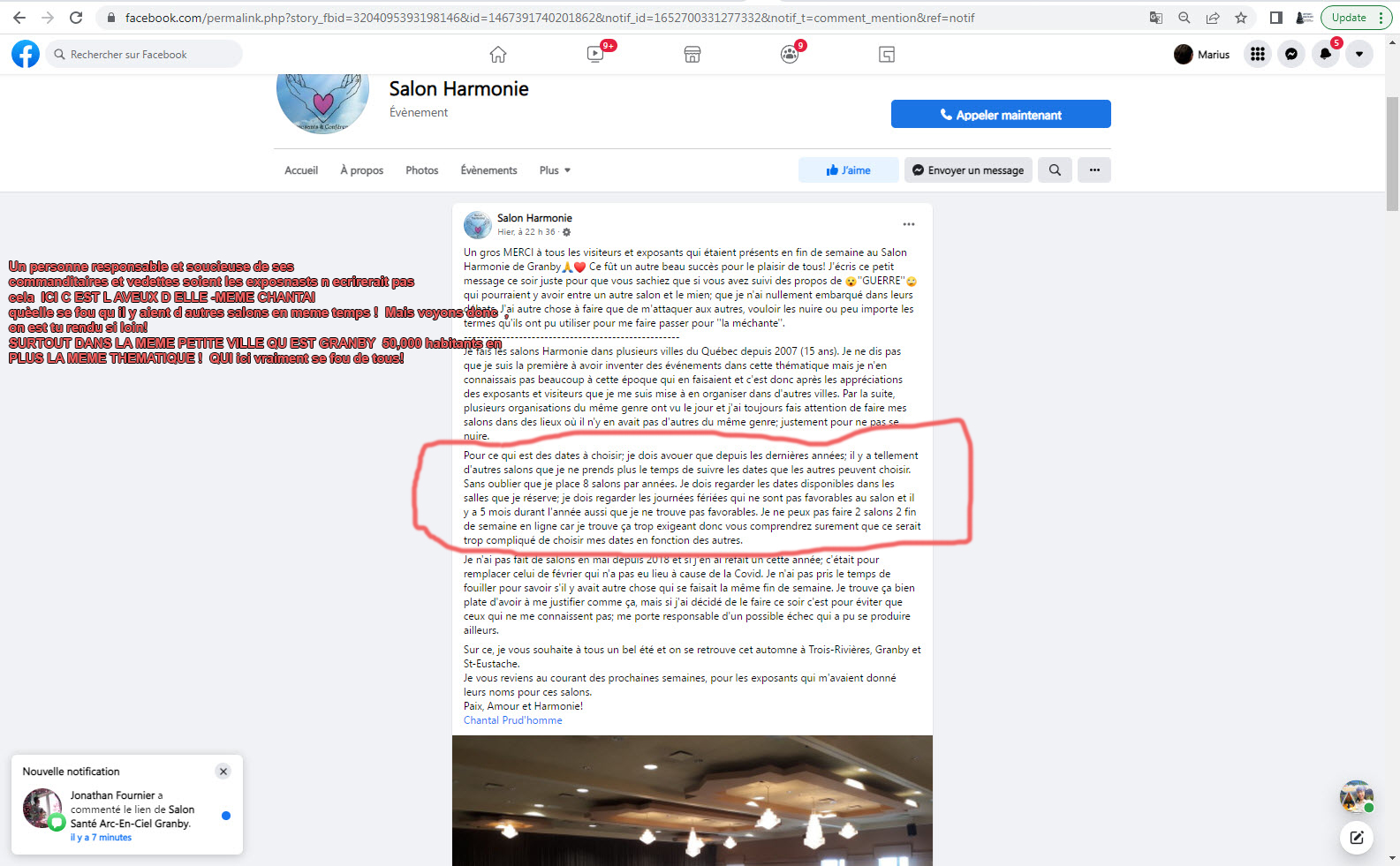

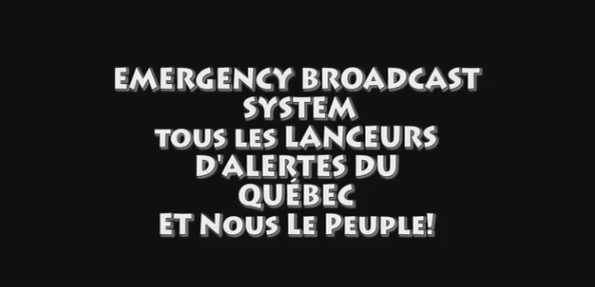





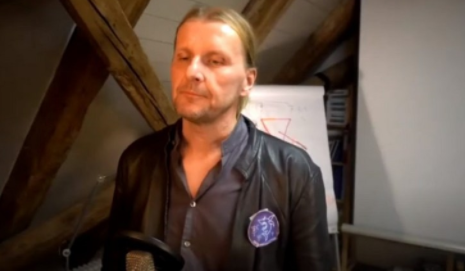



 French (CA)
French (CA)